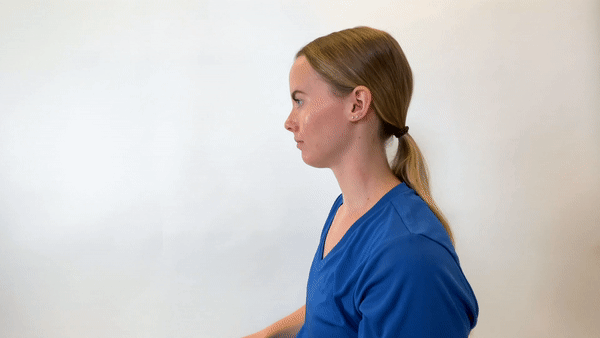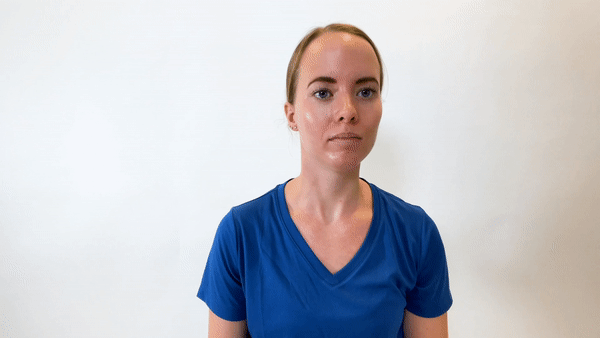Cervicogenic Headaches: Symptoms and Exercises
Can a headache really start from neck pain?! The one word answer is, yes!
Headaches are a common ailment that can range from mild discomfort to debilitating pain. While there are many types of headaches, cervicogenic headaches stand out as a specific and often overlooked type. These headaches originate in the neck and can be caused by various factors related to the cervical spine. As we continue, let’s define cervicogenic headaches, explore their symptoms, and provide some exercises that can help alleviate the pain and discomfort associated with them.
Defining Cervicogenic Headaches
Cervicogenic headaches are a distinct type of headache that originates in the neck and is often misdiagnosed as tension headaches or migraines. The term "cervicogenic" refers to the cervical spine, which includes the neck and upper back. These headaches typically arise due to structural or functional issues in this region, often involving the cervical vertebrae, discs, muscles, or nerves.
Symptoms of Cervicogenic Headaches
Unilateral Pain: Cervicogenic headaches usually occur on one side of the head and neck. The pain often radiates from the neck to the back of the head, temple, and behind the eye.
Neck Pain: Neck pain is a common symptom accompanying cervicogenic headaches. The pain may be dull, aching, or throbbing and may be triggered or exacerbated by neck movements.
Limited Neck Range of Motion: Individuals with cervicogenic headaches may experience stiffness and restricted movement in the neck. They might find it difficult to turn their heads or tilt them forward or backward.
Provoking Factors: These headaches can be triggered or worsened by specific movements, such as neck flexion, extension, or rotation. Poor posture and prolonged sitting can also exacerbate the pain.
Sensory Disturbances: Some people with cervicogenic headaches may experience sensory changes, such as numbness, tingling, or weakness in the upper limbs.
Exercises for Cervicogenic Headache Relief
Sustained Natural Apophyseal Glides (SNAGs)
Begin by draping a strap around your neck. Cross the ends. Raise one end of the strap and place it across your cheek. Rotate your head as far as you can in the direction of the desired stretch. Then, gently pull on the strap until you feel a comfortable stretch. Hold as prescribed.
Hold for 5 seconds. Repeat 10 times.
Cervical Extension - Isometric
Start looking forward with your neck tall. Place one or two hands behind your skull. Press your head into your hands while not allowing your neck to bend. Hold momentarily then return to start.
Hold for 5 seconds. Repeat 10 times.
Neck Range of Motion Exercises
Slowly turn your head to the left, hold for a few seconds, and then turn to the right.
Repeat 10 times in each direction.
Posture Correction
Practice good posture by maintaining a neutral spine and avoiding prolonged periods of slouching. Use ergonomic adjustments at your workspace to minimize strain on the neck.
Upper Back Strengthening
Strengthening the upper back and shoulder muscles can help support the cervical spine. Perform exercises like rows, scapular squeezes, and shoulder blade retractions.
Repeat 10 times for 3 sets
Disclaimer
It's essential to consult with a healthcare professional or physical therapist before starting any exercise program, especially if you suspect you have cervicogenic headaches. They can provide a proper diagnosis and guidance on exercises tailored to your specific condition.
Home Exercise Program Advice
If you are a clinician reading this article, Here is the code to copy and import the above exercises into your saved template section of your TheraXPro account: BH9-7JT
Not sure what I am talking about? Then, click the following link to learn more about how to import HEPs shared by other clinicians to your TheraXPro account so that you can join others in importing and sharing exercise programs with the world! Click Here for Tutorial!
To learn more about TheraXPro as a clinician, please visit www.TheraXPro.com and become part of a community dedicated to removing barriers and improving patients' lives.
In Conclusion…
Hopefully, reading this was not a ‘pain in the neck.’
Cervicogenic headaches are a distinct type of headache originating from the neck, often masquerading as tension headaches or migraines. Recognizing the symptoms and understanding their underlying causes is crucial for effective management. By incorporating targeted exercises and maintaining proper posture, individuals can find relief and reduce the frequency and intensity of cervicogenic headaches, ultimately improving their quality of life. If you suspect you have cervicogenic headaches, seek professional guidance to develop a personalized plan for your specific needs.
Author: Jeffrey Sass, PT, DPT






